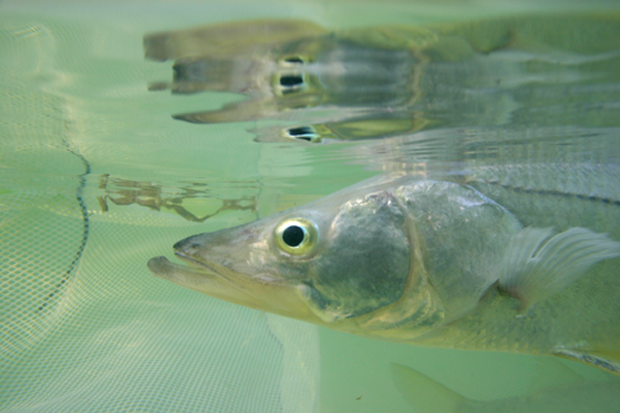[dropcap]T[/dropcap]here are five different species of snook that inhabit Florida waters: common snook, small-scale fat snook, large-scale fat snook, swordspine snook, and tarpon snook.
The most abundant of the five species, the common snook, was once designated as a species of special concern in Florida. Among other causes, good management and conservation measures have led to removal of this designation. The common snook will be the focus for the rest of this list.
Snook are also known as robalo, linesiders, and sergeant fish. In the past they were known as “soapfish” when some sections of the “soapy” tasting skin were left on the fillets due to poor cleaning practices.
Snook can tolerate a wide range of salinity and may be found in fresh water. However, they are extremely sensitive to temperature and a strong, fast moving cold front through an area containing snook may claim many lives due to the rapid drop in water temperature. Witness the fish kill of 2010.
Long term tagging research has been carried out over the past several years and has proven to be a valuable tool in helping to understand the life history of snook.
Snook are protandric hermaphrodites and change sex from male to female. The actual cause of the change is not known, but current research may provide an answer.
Snook are known as “ambush feeders” meaning that they’ll surprise attack their prey as it swims or moves into range. This occurs especially at the mouths of inlets where currents play a role while the snook waits in hiding behind bridge pilings, rocks, or other submerged structures.
Besides preying on small fish, snook also feed on shrimp, crabs, and mollusks.
Snook are very popular with recreational anglers due to their strong fighting spirit and mild, delicate flavor.
[information]
To visit Mote Marine Lab – click here […]
To visit FWC – click here […]
To visit the Snook Foundation – click here […]
[/information]


